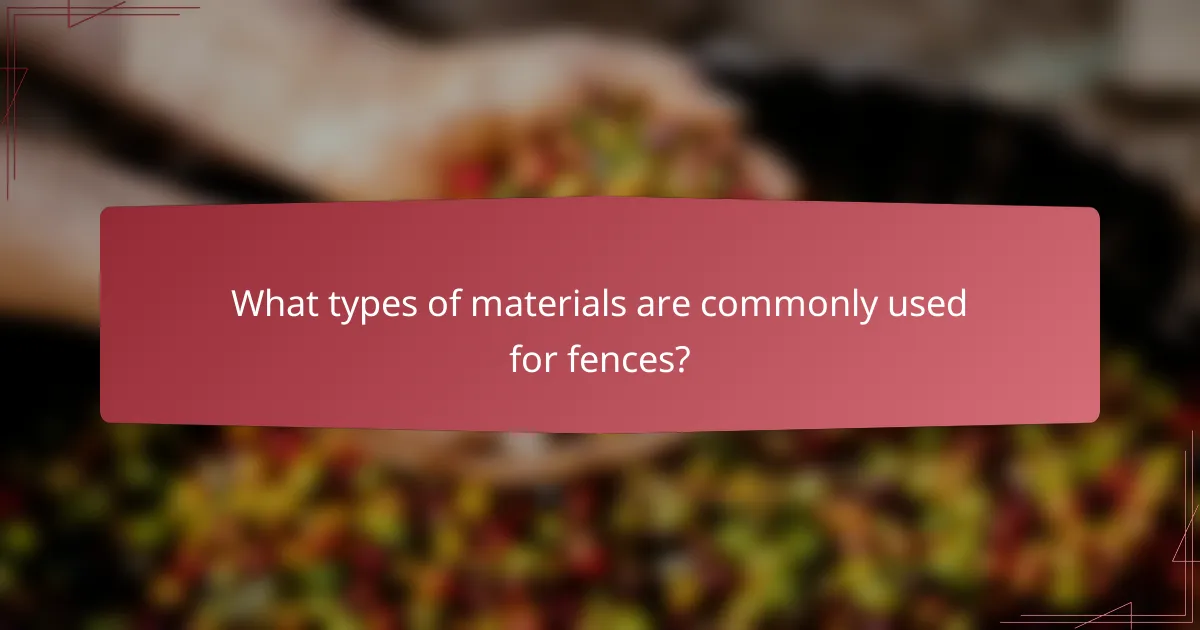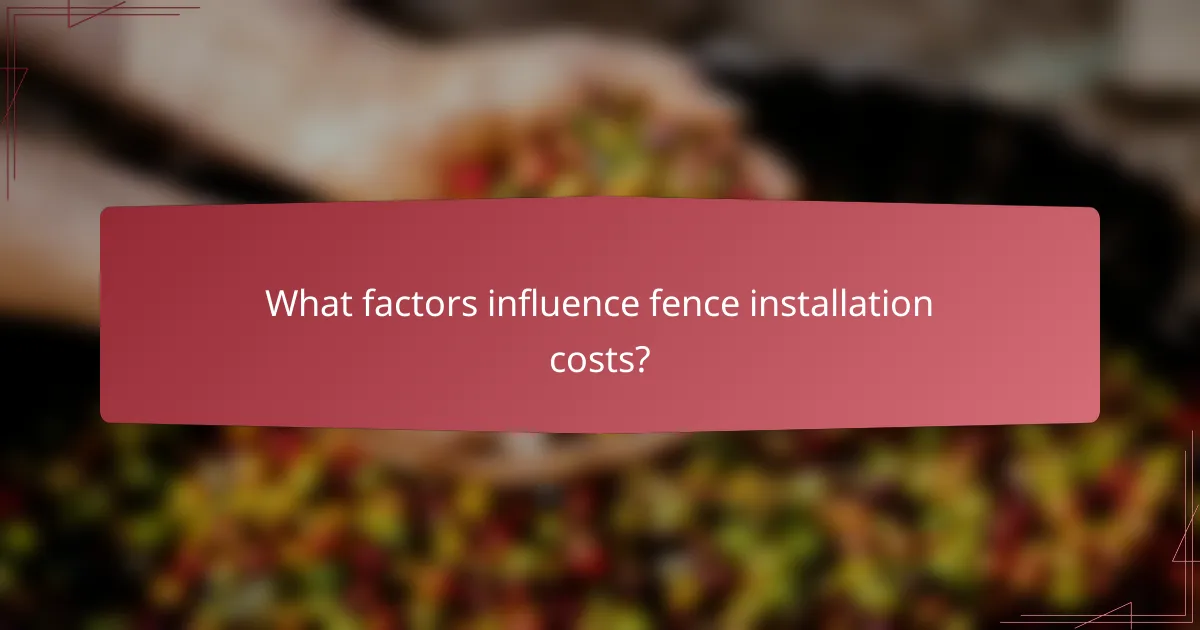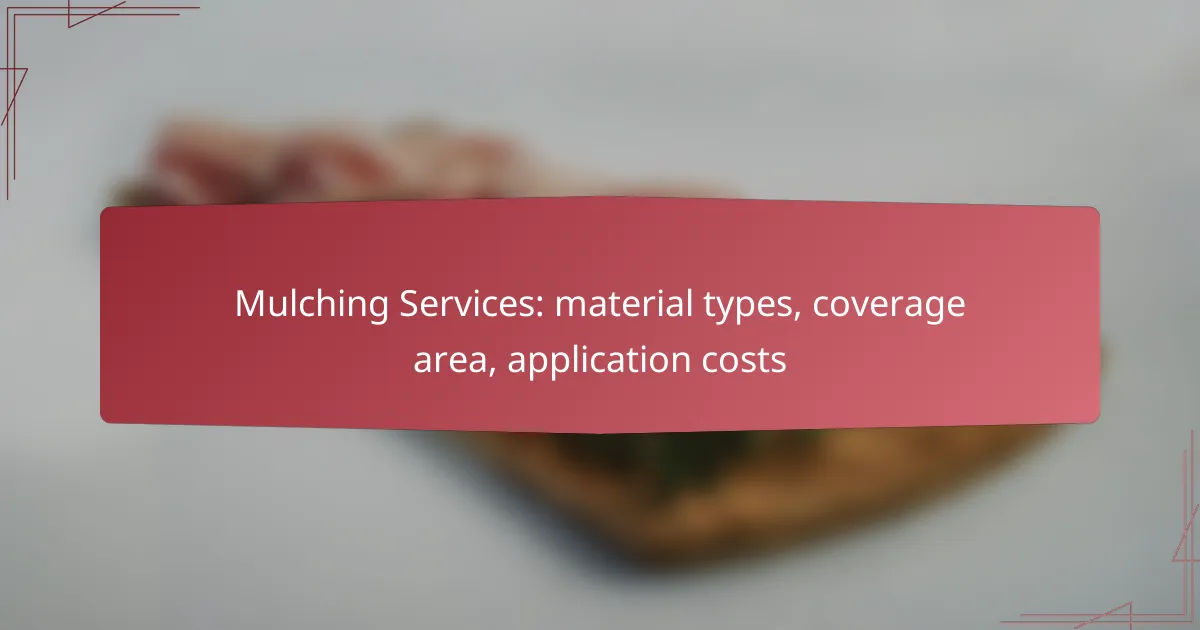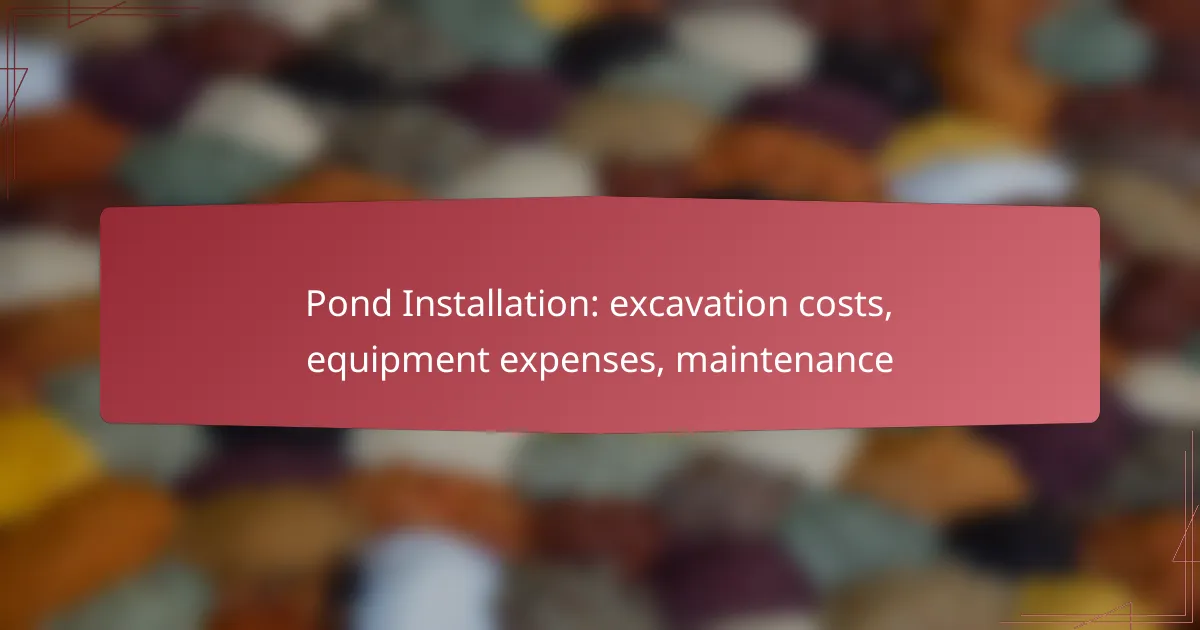When planning a fence installation, homeowners in Los Angeles should consider various factors, including material costs, installation fees, and local height regulations. The choice of materials—such as wood, vinyl, or metal—can significantly impact both the budget and the overall look of the property. Additionally, it’s essential to be aware of height restrictions that typically allow residential fences to reach up to 6 feet in backyards and 3 to 4 feet in front yards, depending on local zoning laws.

What are the costs of fence installation in Los Angeles?
The costs of fence installation in Los Angeles can vary significantly based on materials, labor, and permitting fees. Homeowners should expect to budget for both the physical materials and the professional services required for installation.
Average material costs
The average material costs for fencing in Los Angeles typically range from $10 to $30 per linear foot, depending on the type of material chosen. Common options include wood, vinyl, chain link, and wrought iron, each with its own price point and durability.
For example, wood fences may cost around $15 to $25 per linear foot, while vinyl can be higher, ranging from $20 to $30. It’s important to consider the long-term maintenance and lifespan of each material when making a selection.
Labor fees
Labor fees for fence installation in Los Angeles generally range from $30 to $60 per hour, depending on the complexity of the job and the contractor’s experience. Most installations can take anywhere from a few hours to a couple of days, depending on the length and type of fence.
Homeowners should obtain multiple quotes from licensed contractors to ensure competitive pricing. Additionally, ensure that the contractor is familiar with local regulations and permits to avoid unexpected costs.
Permitting fees
Permitting fees for fence installation in Los Angeles can vary but typically range from $100 to $300. Depending on the height and type of fence, a permit may be required to comply with local zoning laws.
Before starting the installation, check with the Los Angeles Department of Building and Safety to determine if a permit is necessary for your specific project. This can save time and prevent potential fines during or after installation.

What are the height regulations for fences in California?
In California, height regulations for fences vary by location and type of property. Generally, residential fences can be up to 6 feet tall in backyards and 3 to 4 feet in front yards, while commercial properties may have different allowances based on zoning laws.
Residential height limits
For residential properties in California, the maximum height for backyard fences is typically around 6 feet. In front yards, the limit is often lower, ranging from 3 to 4 feet, to maintain visibility and aesthetics. Homeowners should check local ordinances, as some cities may have stricter guidelines.
It’s advisable to consider the purpose of the fence when determining height. For privacy, a taller fence may be preferred, but ensure it complies with local regulations to avoid fines or mandatory removal.
Commercial height limits
Commercial properties in California often have more flexible height regulations, which can vary significantly based on zoning classifications. Some areas allow fences up to 8 feet tall or more, especially for security purposes. However, businesses must adhere to specific local codes and may need permits for taller installations.
When planning a commercial fence, consider the surrounding environment and potential impacts on neighboring properties. Consulting with local authorities can provide clarity on permissible heights and any necessary approvals.

What types of materials are commonly used for fences?
Common materials for fences include wood, vinyl, and metal, each offering distinct advantages and considerations. The choice of material affects durability, maintenance, cost, and aesthetic appeal.
Wood fence options
Wood fences are popular for their natural appearance and versatility. Common types include cedar, pine, and redwood, each with varying costs and lifespans. Cedar is often favored for its resistance to decay, while pine is more budget-friendly but may require more maintenance.
When installing a wood fence, consider the height and spacing of the posts, as well as the type of finish to protect against weathering. Regular sealing or staining can extend the life of the fence significantly.
Vinyl fence options
Vinyl fences are known for their low maintenance and durability. They come in a variety of styles, including privacy, picket, and ranch rail, and are available in several colors. Vinyl is resistant to fading and does not require painting, making it a cost-effective long-term choice.
Installation of vinyl fences typically involves pre-assembled panels, which can simplify the process. However, initial costs can be higher compared to wood, so it’s essential to weigh the upfront investment against future maintenance savings.
Metal fence options
Metal fences, such as aluminum and wrought iron, provide strength and security. Aluminum is lightweight and resistant to rust, making it ideal for residential applications, while wrought iron offers a classic look and high durability but may require more maintenance.
When selecting a metal fence, consider the style, height, and any local regulations regarding fencing materials. Metal fences can be more expensive upfront, but their longevity often justifies the investment.

How do installation fees vary by material?
Installation fees for fences can differ significantly based on the material chosen. Factors such as labor costs, material prices, and the complexity of installation all play a role in determining the final cost.
Wood installation costs
Wood fences typically have moderate installation costs, often ranging from $15 to $30 per linear foot, depending on the type of wood and design complexity. Labor costs can vary based on local rates, which may add an additional $5 to $10 per foot.
When considering wood, it’s essential to factor in maintenance costs, as wood may require regular staining or sealing to prevent rot and weather damage. Choosing treated wood can increase initial costs but may reduce long-term maintenance expenses.
Vinyl installation costs
Vinyl fences generally have higher installation costs, averaging between $20 and $40 per linear foot. The price reflects the material’s durability and low maintenance requirements, which can save money over time.
Installation fees for vinyl can also be influenced by the fence’s height and style. Complex designs or taller fences may require additional labor, increasing overall costs. Ensure to check local regulations regarding height limits for vinyl fences.
Metal installation costs
Metal fences, including aluminum and wrought iron, usually range from $25 to $50 per linear foot for installation. The higher cost is attributed to the material’s strength and longevity, making it a popular choice for security and durability.
When opting for metal, consider the installation complexity, as it often requires specialized skills and tools. Additionally, some localities may have specific regulations regarding the height and type of metal fencing allowed, which can affect installation fees.

What factors influence fence installation costs?
Fence installation costs are influenced by several factors, including the size of the property, terrain challenges, and design complexity. Understanding these elements can help you estimate the overall expenses and make informed decisions.
Size of the property
The size of your property directly affects the total cost of fence installation. Larger properties require more materials and labor, which can significantly increase expenses. For example, a small yard may cost a few hundred dollars, while a larger estate could run into thousands.
When estimating costs, consider the linear footage of the fence needed. Many contractors charge per linear foot, so knowing your property dimensions is crucial for accurate budgeting.
Terrain challenges
Terrain challenges can complicate fence installation and lead to higher costs. Uneven ground, rocky soil, or heavily wooded areas may require additional labor and specialized equipment. For instance, installing a fence on a slope often necessitates more intricate techniques, which can increase labor fees.
Before installation, assess your land’s topography. If you anticipate challenges, discuss these with your contractor to understand how they may impact your budget and timeline.
Design complexity
The complexity of the fence design plays a significant role in installation costs. Simple, straightforward designs are generally less expensive, while intricate styles with custom features or materials can drive up the price. For example, a basic wooden fence may be more affordable than a decorative wrought iron option.
When planning your fence, consider both aesthetics and functionality. Custom designs may require more time and skilled labor, so be prepared for potential increases in your overall budget.

What are the steps in the fence installation process?
The fence installation process involves several key steps, including an initial consultation, site preparation, and the actual installation. Each step is crucial for ensuring the fence is properly installed and meets local regulations.
Initial consultation
The initial consultation is the first step where homeowners discuss their fencing needs with a professional. This meeting typically covers the type of fence desired, budget considerations, and any local regulations that may affect the installation.
During this phase, it’s beneficial to gather information about material costs, such as wood, vinyl, or metal, and to clarify the desired height and style of the fence. This helps in creating a tailored plan that aligns with the homeowner’s vision and local zoning laws.
Site preparation
Site preparation involves assessing the installation area to ensure it is suitable for fencing. This may include clearing debris, marking property lines, and checking for underground utilities that could interfere with the installation process.
Homeowners should ensure that the ground is level and accessible. It’s advisable to obtain any necessary permits before starting work, as local regulations often require compliance with specific height and placement standards.
Installation
The installation phase is where the actual fence is built according to the agreed specifications. This includes setting posts, attaching panels, and ensuring the structure is stable and secure. The installation can take anywhere from a few hours to several days, depending on the fence type and size of the property.
After installation, it’s important to conduct a final inspection to ensure everything meets quality standards and adheres to local regulations. Homeowners should also consider maintenance needs based on the material chosen, as some materials require more upkeep than others.



